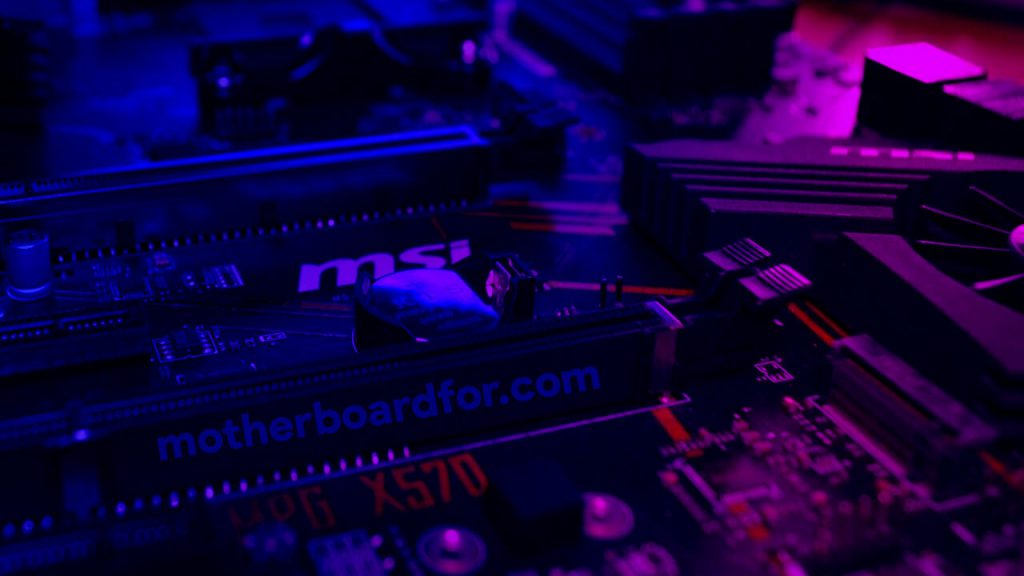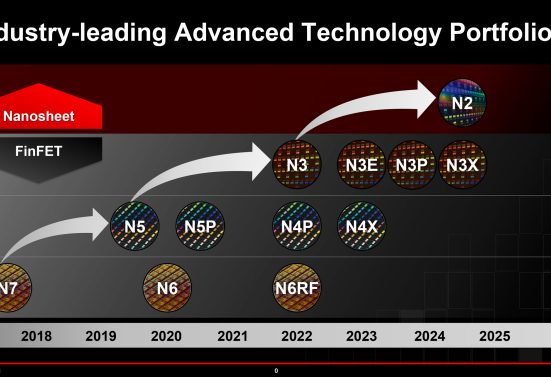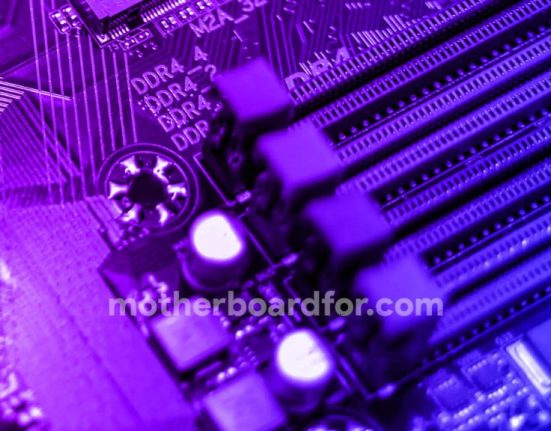The number of GPUs a motherboard can support It depends on the number of PCI Express slots he has it
Most motherboards They have two or three PCIe slots, which means they can support up to two or three GPUs.
However, some High-end motherboards have four or more PCIe slotswhich means they can support four or more GPUs.
Check out some amazing stuff Intel and AMD Motherboard Reviews.
How many graphics cards can a motherboard support?

The average motherboard It can support six GPUs or more, depending on the number of PCIe slots.
This means that for every six additional GPUs you want to add, you'll need another CPU, memory, storage, and motherboard.
Please note that it is the graphics card that does most of the work, so Make sure you get a good one!
Do motherboards have GPU limits?
Yeah, Motherboards have GPU limitsMost motherboard manufacturers include a maximum number of GPUs that can be used with their products.
This number is generally twobut some motherboards allow you to use three or even four GPUs.
The main reason for this limit is prevent system overclockingwhich can cause instability and possible damage to components.
While it is possible to use more than the recommended amount of GPUs, it is not recommended as it may void your warranty and cause problems in the future.
Can a motherboard limit the CPU and GPU?
The impact of a motherboard on a CPU and GPU can be quite different. While a motherboard can help regulate the power and performance of a CPU, the same is not necessarily true for a GPU.
In fact, you may be able to overclock your GPU without any intervention from the motherboard.
So while the motherboard can affect the CPU in terms of how it regulates power and performance, It generally has a minor impact on the GPU..
How to determine how many GPUs a motherboard can support?
To determine how many GPUs a motherboard can support, you first need to… Consider the number of PCIe slots Available on motherboard.
On average, a motherboard can support six or more GPUs, depending on the number of PCIe slots. In other words, for every six additional GPUs, you'll likely need to add another CPU, memory, storage, and a motherboard.
Please note that it is the graphics card that is responsible for most of the work, however, the capabilities of the motherboard will ultimately determine how many GPUs can be supported.
Can my motherboard support 2 graphics cards?
Your motherboard must have Two PCIe x16 slots to support dual graphics cardsHowever, it's important to note that not all PCIe x16 slots are created equal.
To run dual graphics cards, you need two x16 slots that can operate in x8/x8 mode or x16/x4 mode.
Does one motherboard support all GPUs?
Most GPUs on the market It will work with almost any motherboard. which was released in the last decade.
However, as technology continues to advance, it is always best to check compatibility before purchasing.
You'll only need to worry about graphics card compatibility if you plan to purchase a dedicated GPU.
How many GPUs can Windows detect?
He same 8 GPU limit In Windows it obviously exists for both Nvidia and AMD.
Can my motherboard support multiple GPUs?
The PCIe slot is an important detail to consider when trying to determine If a motherboard can support Multiple GPUs.
A motherboard must have two PCIe x16 slots to support dual graphics cardsHowever, just because a motherboard has two PCIe x16 slots doesn't mean it can handle two graphics cards properly.
The BIOS and other software must be configured correctly for dual GPUs to work together smoothly.
If you are unsure whether your motherboard can support dual GPUs, it is best to check with the manufacturer or retailer before purchasing any additional hardware.
Does one motherboard support all GPUs?
The vast majority of modern GPUs They are compatible with almost any motherboard. of the last decade.
However, as with any electronic compatibility issue, it's always best to err on the side of caution and check your graphics card's compatibility before making a purchase.
This is especially important if you plan to purchase a dedicated GPU, rather than using the integrated graphics that come standard on most motherboards.
Can you put 3 GPUs in a PC?
If you want to add an additional graphics card to your PC to support two additional monitors, you can do so as long as the GPU is different from the ones used in your SLI setup and as long as it supports NVIDIA PhysX.
(GeForce 8 series or higher with at least 256MB memory)
Just keep in mind that adding a second graphics card may impact overall system performance.
How many GPUs can you use at once?
A computer with eight GPUs can theoretically suitable In a 5U chassis and a 42U rack could contain approximately 256 of these devices.
However, this isn't the densest configuration possible – other configurations can fit more GPUs into the same amount of space.
How can I run multiple GPUs on one motherboard?
If you want to use multiple GPUs on a single motherboard, the process is fairly simple. First, connect the display cable to any GPU on the motherboard and turn on the computer.
If you don't see a display, don't worry – just swap display cables between different GPUs and see which one works.
Once you have a display, proceed to power up your computer. Keep in mind that if you're using more than one GPU, you'll need to have enough power to run them all. Make sure your power supply is up to the task before proceeding.
Additionally, you may need to install drivers for each individual GPU for optimal performance.
How many GPUs can a computer have?
The maximum number of GPUs a computer can have depends on the GPU type, system form factor, and rack size.
For example, a full-size GPU can be added to a desktop PC, while a smaller form factor system might support only one or two GPUs. A 42U rack can hold eight 5U systems, resulting in 256 GPUs per rack.
Is it possible to mix GPUs?
When it comes to mining cryptocurrencies, one of the most frequently asked questions is “Can you mix GPUs?” The answer is yesYou can mix and match GPUs from different manufacturers on the same computer for mining purposes.
However, there are a few things you need to keep in mind before you do so. First, your motherboard needs to support dual GPUs. Second, you need to make sure your computer has adequate ventilation and power supply to accommodate both GPUs.
And finally, it's important to note that mixing and matching GPUs can result in lower overall performance compared to using similar models from the same manufacturer.
That being said, if you choose to mix and match GPUs, it is still possible to successfully mine cryptocurrency.
Just be aware of the potential drawbacks and Take them into account when making your decision..
How to determine how many GPUs a motherboard can support?
To determine how many GPU To know what components a motherboard can support, you'll need to consider several different factors.
The first is the number of PCIe slots available on the motherboard. Most motherboards have at least six PCIe slots, meaning they can theoretically support up to six GPUs.
However, it is important to note that not all motherboards are created equal and some may have more or less than six PCIe slots. Another factor to consider is the CPU.
If you like Add more than six GPUs to your systemthen you'll also need to add another CPU. Memory and storage are also important considerations when determining how many GPUs a motherboard can support.
Ultimately, the best way to determine how many GPUs your particular motherboard can support is to check with the manufacturer or retailer.
How many GPUs can a motherboard support?
The answer to the question is that It depends on the motherboard and graphics card.On average, a motherboard can support six GPUs, but this number can vary depending on PCIe slots.
For every six additional GPUs, you'll need another CPU, memory, storage, and a motherboard.
How many GPUs can the motherboard support?
The fact is that the The graphics card is responsible for the actual work. But when it comes to a motherboard, on average it can support six GPUs or more depending on the PCIe slots.
In other words, for every six additional GPUs, you'll need to add another CPU, memory, storage, and a motherboard.
So if you wanted to build a system with twelve GPUs, for example, you would need two CPUs, four pieces of RAM, plenty of storage space, and of course, two motherboards.
How many GPUs can I mine with?
TO GPU is a preferable option for mining cryptocurrencies even when you can mine with a CPU because it multiplies the profits.
With GPU cryptocurrency mining, you can connect up to 9 GPUs while for CPUyou can use two unless they are virtual CPUs.
Can multiple GPUs work together?
How to add a second graphics card to your computer It can give you a significant performance boostespecially if you are using demanding applications or playing games.
Both AMD and Nvidia They have solutions that allow two graphics cards to work togetherHowever, using dual graphics cards has some advantages and disadvantages.
Some of the advantages include better video, 3D, and gaming performance. However, there are also some disadvantages to be aware of, such as potential compatibility issues and the fact that two cards will generate more heat than one.
If you are thinking of installing a second graphics card in your PC, Carefully weigh the pros and cons to decide if it is right for you.
Can you run 3 GPUs at once?
It is possible to add a second or even a third graphics card to your computer to connect additional monitors.
This will allow you to use multiple monitors with your computer and take advantage of the increased productivity this can offer.
To do this, you need to make sure that any additional graphics cards you are installing support NVIDIA PhysX (GeForce 8 series or higher), as well as have at least 256MB of memory.
It's also important to note that SLI GPUs must be different than the ones you're already using.
How many GPUs can the motherboard support at most?
The fact is that the graphics card is responsible for the actual work, but when it comes to a motherboard, on average it can support six GPUs or more depending on the PCIe slots.
In other words, for every six additional GPUs, you'll need to add another CPU, memory, storage, and a motherboard.
That said, if you're looking to combine two top-of-the-line graphics cards with an equally powerful processor, then you should be happy with almost any modern motherboard on the market.













Leave feedback about this